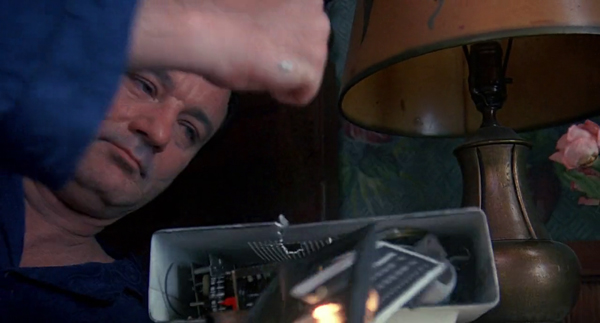What if there was no tomorrow..?
03/02/2015
It’s February 2nd, which means only one thing, it’s Groundhog Day. Usually one TV station will show the movie on repeat all day, but have you wondered where the idea of one day repeating itself actually came from?
One of the first examples of the idea being incorporated into a story is in the 1905 novel The Strange Life of Ivan Osokin by PD Ouspensky. In the book, the character Osokin is given the opportunity to live his life over again by a magician…and Osokin takes him up on the offer, only to make the same mistakes all over again. Eventually he reaches the point in time where he met the magician, who explains to Osokin that he cannot change the recurring wheel that is ‘this trap called life’… and that Osokin must learn to sacrifice in order to escape it, to find his salvation.
It does sound a little similar to Groundhog Day, but Harold Ramis has stated that this wasn’t where the idea came from.
Ouspensky himself based his story on Friedrich Nietzsche’s theory of something called ‘eternal recurrence’.
This is a concept that the universe has been recurring, and will continue to recur, in a self-similar form an infinite number of times across infinite time or space. It’s found in Indian philosophy and in ancient Egypt and was subsequently taken up by the Pythagoreans and Stoics.
With the decline of antiquity and the spread of Christianity, the concept was generally forgotten about in the Western world, with the exception of Nietzsche, who connected the thought to many of his other concepts, including ‘amor fati’, a Latin phrase used repeatedly in his writings that loosely translates to ‘love of fate’ and used to describe an attitude in which you see everything that happens in your life as positive or, at the very least, necessary.
Time is viewed as being not linear but cyclical. The philosophical concept of eternal recurrence was also addressed by German philosopher Arthur Schopenhauer in 1818 and greatly influenced Nietzsche’s thinking.

The premise proceeds from the assumption that the probability of a world coming into existence exactly like our own is greater than zero. If space is infinite, then cosmology tells us that our existence will recur an infinite number of times and in 1871, French socialist commentator Louis Auguste Blanqui claimed to be able to show that the eternal recurrence was a mathematical certainty. In the post-Einstein period, there were doubts that time or space were in fact infinite, but many models existed, which provided the notion of spatial or temporal infinity required by the eternal return hypothesis.
Nietzsche’s first mentions eternal recurrence in his book The Gay Science, published in 1882, and presents this concept as a hypothetical question rather than postulating it as a fact. There’s some debate as to where Nietzsche actually took his inspiration from, but many, if not all of the sources, are clearly evident.
After the release of Groundhog Day in 1993, several writers emerged, claiming that the story was stolen from their idea. Science-fiction author Richard Lupoff claimed that it was a rip-off from his short story 12:01pm, whilst Ken Grimwood, author of Replay, also made a claim.
However, Groundhog Day writer Danny Rubin has said his only jumping off point of inspiration for this film was the 1892 story Christmas Every Day by William Dean Howells.
The concept has since been borrowed in other films, including the Disney cartoon Mickey’s Once Upon a Christmas (1999), the TV show Day Break (2006) and the Adam Sandler comedy, 50 First Dates (2004). It was also was borrowed in the Egyptian comedy Alf Mabrouk (2009) and the popular sci-fi series Stargate SG1 also produced a hilarious episode in season four called Window of Opportunity.
So, Harold Ramis explained in an interview in 2009 that, “The movie is a metaphor for a lot of things, which was brought home to me when it opened. There were pickets outside the theater in Santa Monica and I said what are they protesting and he [co-producer Trevor Albert] said they’re not protesting, they’re Hasidic Jews walking around with signs that say ‘are you living the same day over and over again?’ My mother-in-law lived for 35 years in a Zen Buddhist meditation center to the end of her life and I called her right away and she said ‘they all saw it, the abbots and the senior monks and they loved it – they thought it expressed a fundamental Buddhist concept’. Then I started getting letters from Catholic priests, Christian and Baptist ministers saying ‘this totally expresses our philosophy’…”
The full interview can be seen here.
Since its release, the movie Groundhog Day has passed into popular culture legend, so much so, that it was chosen to be preserved by the National Film Registry in 2007 and the experience of déjà vu or more often actually living the whole day again – something everybody has felt as some point in their lives – is commonly referred to as a ‘Groundhog Day’ experience.